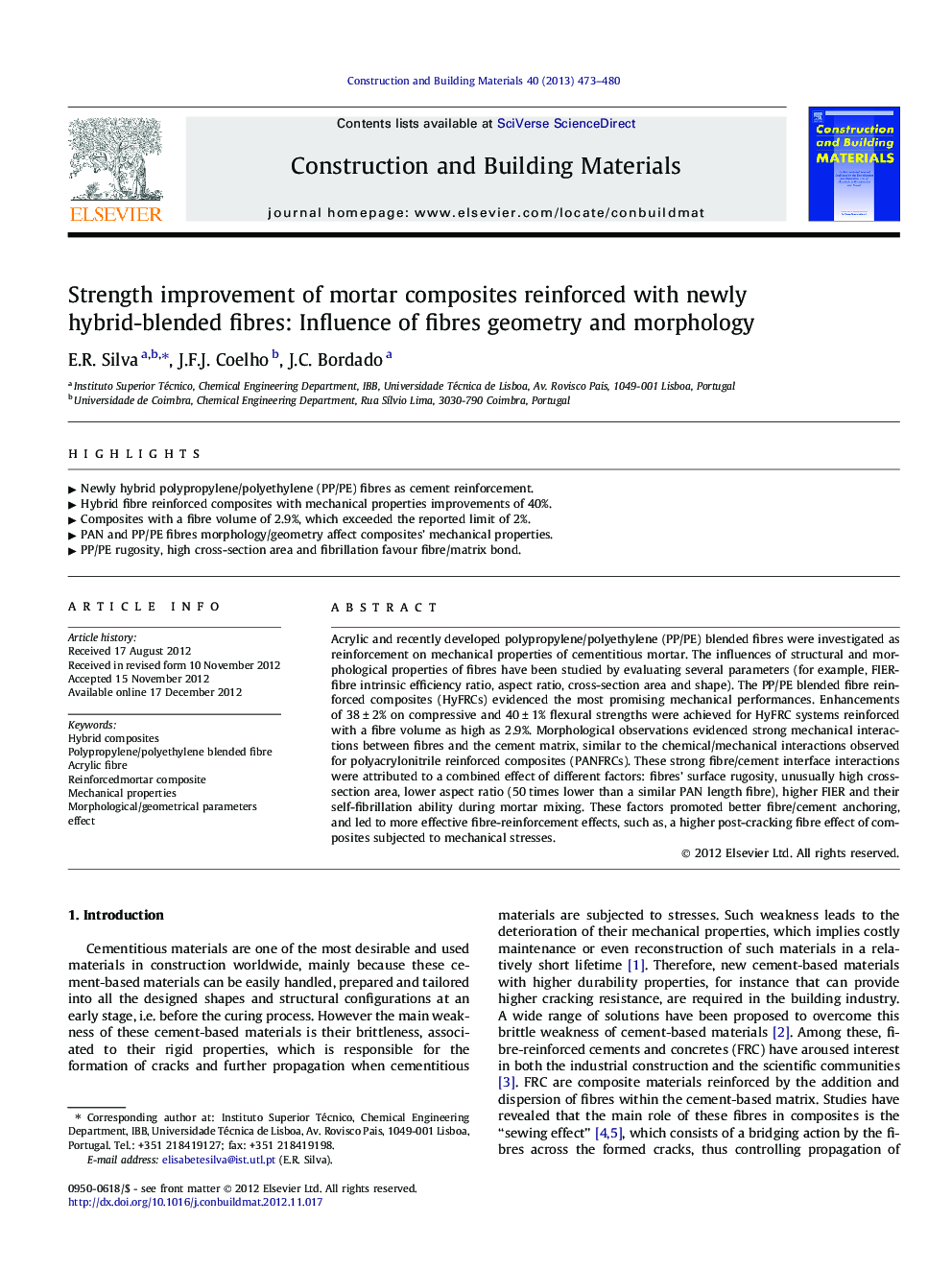| Article ID | Journal | Published Year | Pages | File Type |
|---|---|---|---|---|
| 258286 | Construction and Building Materials | 2013 | 8 Pages |
Acrylic and recently developed polypropylene/polyethylene (PP/PE) blended fibres were investigated as reinforcement on mechanical properties of cementitious mortar. The influences of structural and morphological properties of fibres have been studied by evaluating several parameters (for example, FIER- fibre intrinsic efficiency ratio, aspect ratio, cross-section area and shape). The PP/PE blended fibre reinforced composites (HyFRCs) evidenced the most promising mechanical performances. Enhancements of 38 ± 2% on compressive and 40 ± 1% flexural strengths were achieved for HyFRC systems reinforced with a fibre volume as high as 2.9%. Morphological observations evidenced strong mechanical interactions between fibres and the cement matrix, similar to the chemical/mechanical interactions observed for polyacrylonitrile reinforced composites (PANFRCs). These strong fibre/cement interface interactions were attributed to a combined effect of different factors: fibres’ surface rugosity, unusually high cross-section area, lower aspect ratio (50 times lower than a similar PAN length fibre), higher FIER and their self-fibrillation ability during mortar mixing. These factors promoted better fibre/cement anchoring, and led to more effective fibre-reinforcement effects, such as, a higher post-cracking fibre effect of composites subjected to mechanical stresses.
► Newly hybrid polypropylene/polyethylene (PP/PE) fibres as cement reinforcement. ► Hybrid fibre reinforced composites with mechanical properties improvements of 40%. ► Composites with a fibre volume of 2.9%, which exceeded the reported limit of 2%. ► PAN and PP/PE fibres morphology/geometry affect composites’ mechanical properties. ► PP/PE rugosity, high cross-section area and fibrillation favour fibre/matrix bond.
